17 comments, 223 likes on Facebook, and 88 retweets.
You’re writing stuff, and people are reading it. They’re clicking your links and arriving at your blog. Your efforts are finally paying off with a steady stream of traffic.
We’re not going to focus on the importance of a business blog. You know it’s crucial to business success in the 21st century:
- 85.1% of American households have some sort of computer, to say nothing of the prevalence of smartphones.
- Marketers that prioritize blogging as part of their efforts are 13x more likely to see a positive return-on-investment.
- The number one challenge for marketing departments is generating traffic and leads. A frequently updated blog can kill two birds with one stone.
- Nearly 80% of people identify as blog readers.
- Companies that blog generate 67% more leads than those who don’t, 434% more indexed pages, and 97% more indexed links…all of which lead to better SEO and ranking.
- 70% of B2C marketers use blogging in their marketing efforts, second only to social media (89%) and email (86%). The numbers are even higher in the B2B sphere, where 79% use blogging, 92% use social media, and 93% use email.
- More is more: those that publish 16+ posts per month generate nearly 3.5x more traffic and 4.5x more leads than those that only publish between 0-4.
Blogs are a popular, effective, and affordable way to bring people to your digital domain. That’s the good news.
The “bad” news? Traffic generation is only half the battle. Pageviews, likes, tweets, and comments are nice, but none of them are the ultimate goal. You need to convert that traffic into leads. According to Forrester Research, around 97-98% of your visitors leave without taking an action or identifying themselves.
They may absolutely love your posts. They may come back again and again. They may consider you an authority and expert in your industry. But the vast majority pop in, read, and leave. You have to do something to take it to the next level. Can you afford to let 98% of your potential leads disappear without a trace?
Traffic generation combined with lead generation make your blog a worthwhile investment. Everything else – likes, retweets, comments – are nothing but vanity metrics. People like your posts and that gives you a nice little ego boost, but that and $3.50 might get you a coffee at Starbucks.
You need to actively generate both traffic and leads. Traffic without leads is meaningless. Leads without traffic will eventually dry up.
Here’s the best news: a frequently updated blog with high quality, valuable content is a lead generation machine…when done properly.
Small to mid-sized (SMB) businesses that blog experience 126% more lead growth than those that don’t bother.
So increase your traffic. There are plenty of great guides and tutorials on how to do that. Just don’t forget about the lead generation part of the equation. Remember:
Traffic generation + lead generation = digital marketing bliss
That said, you don’t want to explicitly bombard your readers with aggressive tactics. No one likes a pushy salesperson.
Nor do you want to be so subtle that no one even notices your trying to convert them from visitor to lead.
Find the middle ground with these tactics to nudge your traffic into lead territory because that’s where they want to go.
If you want them to do something, you’ve simply got to ask.
Call-to-Action
For some of you, this might be a wake-up call. Your blog posts need a call-to-action. Every one of them. If you’re ending your posts with nothing more than an invitation to leave a comment, you’re doing it wrong. You need to get your visitors to do something: sign up, download, click, read something else, subscribe, install, contact you, and so on.
Are you asking? Are you giving them those opportunities to convert, or just hoping they’ll decide to do so on their own?
A high quality blog post without a compelling CTA is a lead lost. They’re already on your site. They’re already interested and engaged with you and your brand. So give them more.
A strong CTA is action oriented, benefit-to-them driven, visual, persuasive, and ideally creates a sense of urgency.
But it also needs to be easy to find. There are several places you could locate your CTA on your site:
- At the top of the page
- At the end of the post
- Within the post itself
- In the sidebar
- As a floating or scrolling popup
- As a sliding popup
- As a full-screen overlay
You don’t want to crowd the page and choose them all. You need to select one or two that maximize exposure on your blog and resonate with your readers.
And you do that by testing. In real estate, the axiom is location, location, location. In digital marketing it’s test, test, test.
“Almost any question can be answered, cheaply, quickly and finally, by a test campaign. And that’s the way to answer them – not by arguments around a table. Go to the court of last resort – the buyers of your product.” ~Claude Hopkins
Pick a few, set up an A/B test, and see what actually works best. Test various locations, types, colors, designs, copy, offer, and more. Zero in on the single most (or top two, or top three) powerful to turn your traffic into your leads. Use Google Optimize, VWO, Optimizely, or a similar service to make it fast and easy.
While only you can ultimately decide what works best for your blog, these are a few popular and efficient tactics to test.
Hello Bar
When someone arrives on your blog, they’re at the top of the page, and there’s no guarantee they’re going to scroll down any further. Putting your CTA at the very top, then, makes a lot of sense.
The Hello Bar is a very simple but highly effective tool that places your call-to-action in a thin, attention-grabbing band across the very top of your page. Instantly recognizable, static, and stays there even if they do decide to scroll down.
Using just a hello bar, DIYThemes generated just under 1200 new subscribers in only 30 days.
While the Hello Bar is perhaps the industry standard, there are alternatives available that do the same thing:
- SalesPanda
- Sumo SmartBar
- WP Notification Bar
- Sleeknote
- OptinMonster
You can also find several free WordPress plugins, but remember that you get what you paid for.
A hello bar can be used to encourage social engagement or email subscriptions, promote new products or services, and more.
In-text CTAs
According to recent analysis by Chartbeat, most people don’t read your entire blog post. In fact, a full 10% never scroll at all, while the majority stop after scrolling through about 60% of it.
You can still get your call-to-action in front of those individuals with an in-text CTA.
Some of you may be thinking that the hello bar solves this problem. It’s at the top and seen by everyone. That’s true in theory. But let me introduce you to something called banner blindness.
Because we’re so used to them, because we’re inundated with them everywhere while online, many of us either choose to ignore or subconsciously block out static banners and ads. We just don’t “see” them. This is banner blindness at work, and your colorful hello bar may fall victim to it.
But an in-text call-to-action that’s either a direct or indirect part of your blog post is different. Include 1-2 in the first 60% of it, and you’re going to have a lot of eyes on it as they read.
Hubspot generates between 47-93% of their leads via what they’ve labelled anchor text CTAs (compared to only 6% for end-of-post banners).
It’s a bigger font and different color to stand out, but still relevant to what they’re currently reading about in the blog post. Value added. Visitor to lead.
That same analysis revealed that anchor text CTAs combined with internal link CTAs represent a whopping 83-93% of their leads.
As you can see, internal link calls-to-action are part of the blog post itself. Click one, and it takes you to a landing page to subscribe or download something relevant to the topic at hand.
Location, Location, Location
Besides the top of the page and in the post itself, you can place a CTA virtually anywhere on your page. Test each one to see what works best for you.
Static Sidebar
A static banner in the sidebar is widely used in the blogosphere because it typically works quite well. Almost every blog you visit will likely have at least one inviting you to either subscribe to the email newsletter or contact the author.
It’s unobtrusive. It’s not “in the face” of your readers. It’s not annoying. It’s just there, quietly doing its job of helping to convert traffic to leads.
That said, it shouldn’t be your only tactic. The sidebar CTA is easy to ignore, subject to banner blindness, and gone as soon as they scroll down. Use it in partnership with something else.
AdEspresso found a 0.4% conversion rate (CVR) for their static sidebar CTAs.
Scrolling Sidebar
A scrolling CTA looks very similar, but it follows the reader down the post. Because of this mobility, it tends to stand out a bit more and gives the reader more time to decide to click. AdEspresso scrolling ads had a CVR nearly double – 0.76% – the static rate.
Slide-in or Popup
A slide-in popup or overlay is the next logical step in the evolution of the call-to-action. It relies on a trigger – say, X% of the page scrolled, or X number of seconds on page – before it slides in from the side, top, or bottom.
In doing so, it’s only revealed to those readers that have already demonstrated real interest in the post. If they’ve scrolled down 75% of the way – past the 60% where most visitors stop – or spent at least 90 seconds reading, then you’ve got their attention. Strike while the iron is hot.
OptinMonster, Sumo, and NinjaPopups are three respected options to give these a try. Popups delivered a 2.5% CVR for AdEspresso, while others have experienced an impressive 10x higher email subscriptions after introducing the strategy to their site.
You can customize and experiment with everything from where, when, and why to find the perfect combination.
Exit Intent Overlay
An exit overlay works in much the same way, but is only triggered when someone demonstrates their intent to leave by moving the cursor towards the tab, address bar, or back button on their browser.
Remember when I said that 97-98% of your traffic leaves without completing an action? An exit popup or overlay can pull back at least some of those lost leads.
Demonstrate intent to leave on the DODOcase website, and this pops up:
This is a great example of a lightbox overlay. The box takes center stage, overlaying and darkening the rest of the website. It stands out, and gives each visitor a clear choice between this or that.
An exit popup can offer a special discount or coupon, collect feedback, introduce a useful lead magnet, suggest another product or blog post, recommend your newsletter, or whatever else you want to dangle in front of them to tempt them to stay and convert.
Welcome Mat
When a visitor first arrives at your site, take advantage of the opportunity to convert immediately with a welcome mat. This whole page overlay displays a compelling call-to-action before revealing the post or page they’ve clicked on.
Navigate to ClickMinded, and you don’t initially see their homepage, you see this:
Both Sumo and OptinMonster offer popular options. With them, you can encourage your site visitors to join your email list, check out your latest blog post, download some valuable resource, and more. Much like an exit overlay, they have to actively choose not to do whatever it is you’re asking them to do. Some will. Many won’t.
AppSumo discovered that a welcome mat was 3x more effective for them than any other page or tactic for collecting email addresses.
An optimized and compelling call-to-action strategically placed on your page is your best bet for turning traffic into leads, but it’s not the only way.
Retargeting
Despite your best efforts, there will still be a sizeable chunk of traffic that leaves without completing your CTA. Maybe they were pressed for time, or your offer wasn’t compelling enough, or they simply missed it.
That’s where retargeting comes in. It gives you another kick at the can.
To make use of it, you need to use a service like ReTargeter, Perfect Audience, P
source https://blog.kissmetrics.com/convert-blog-readers-to-leads/
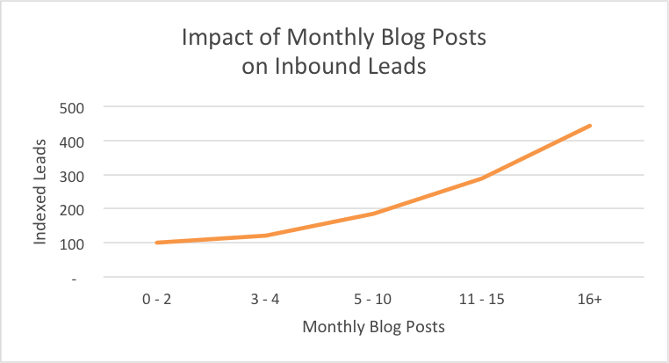
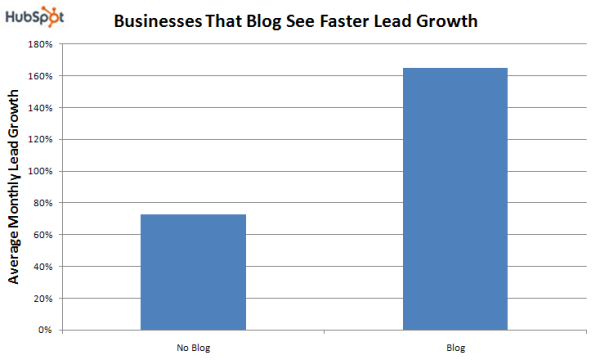


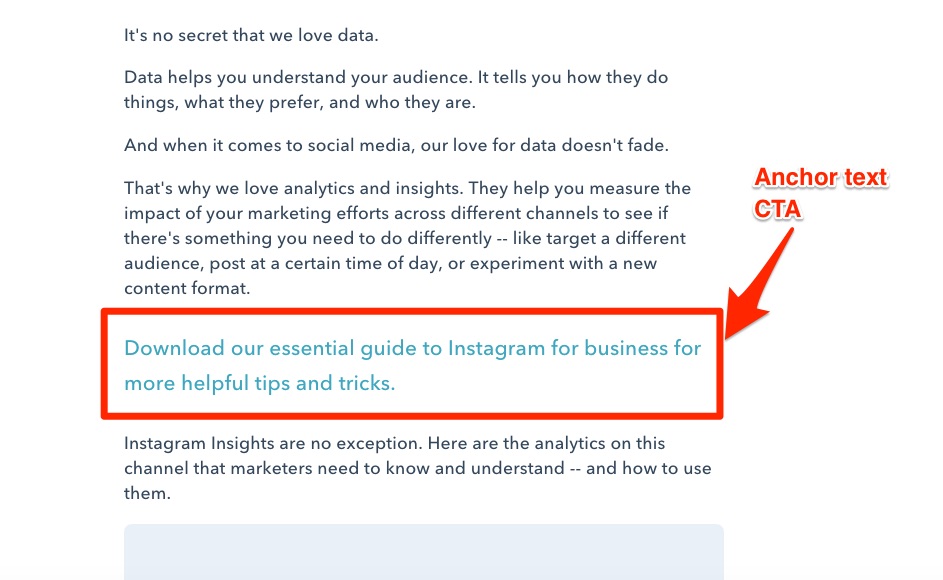
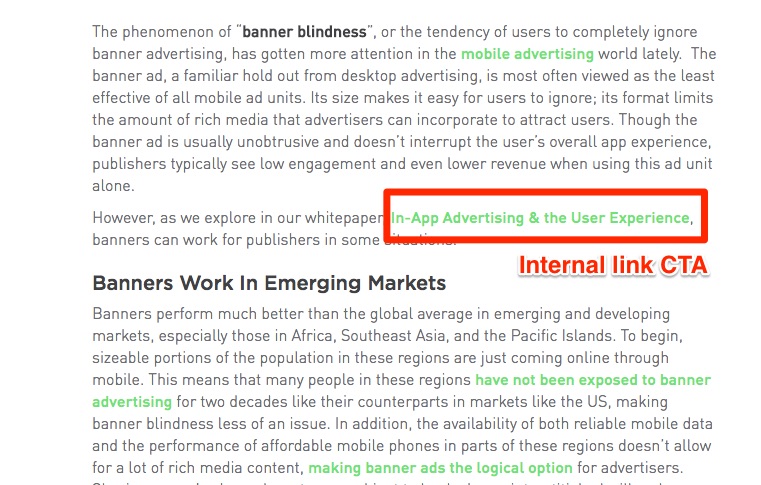
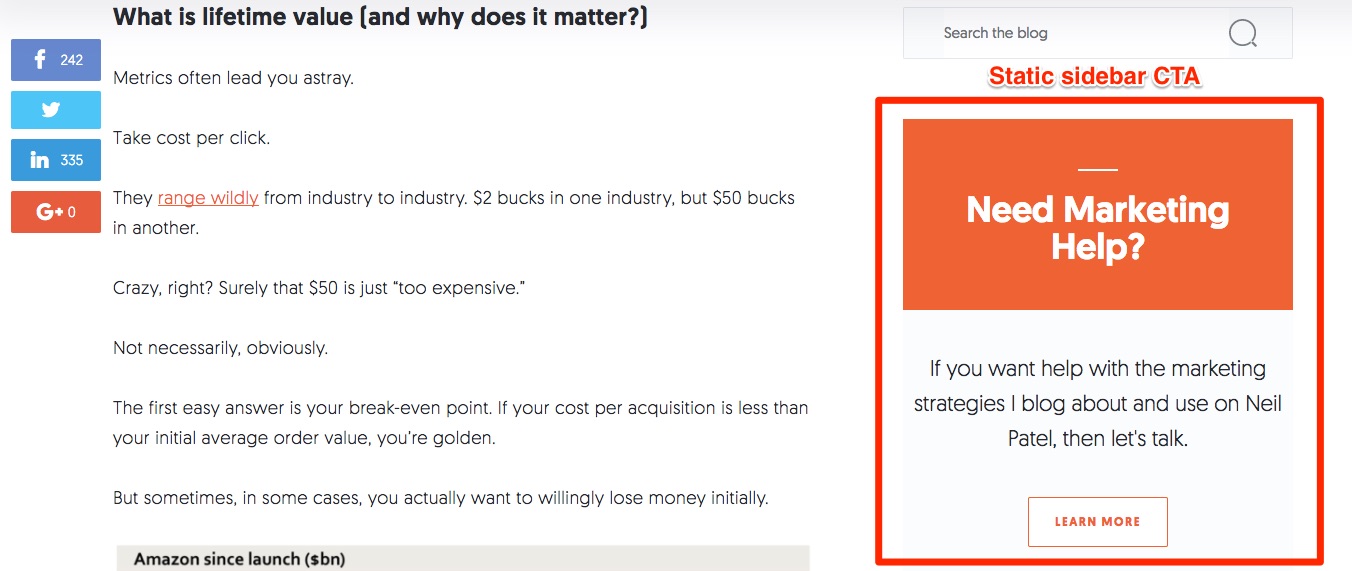
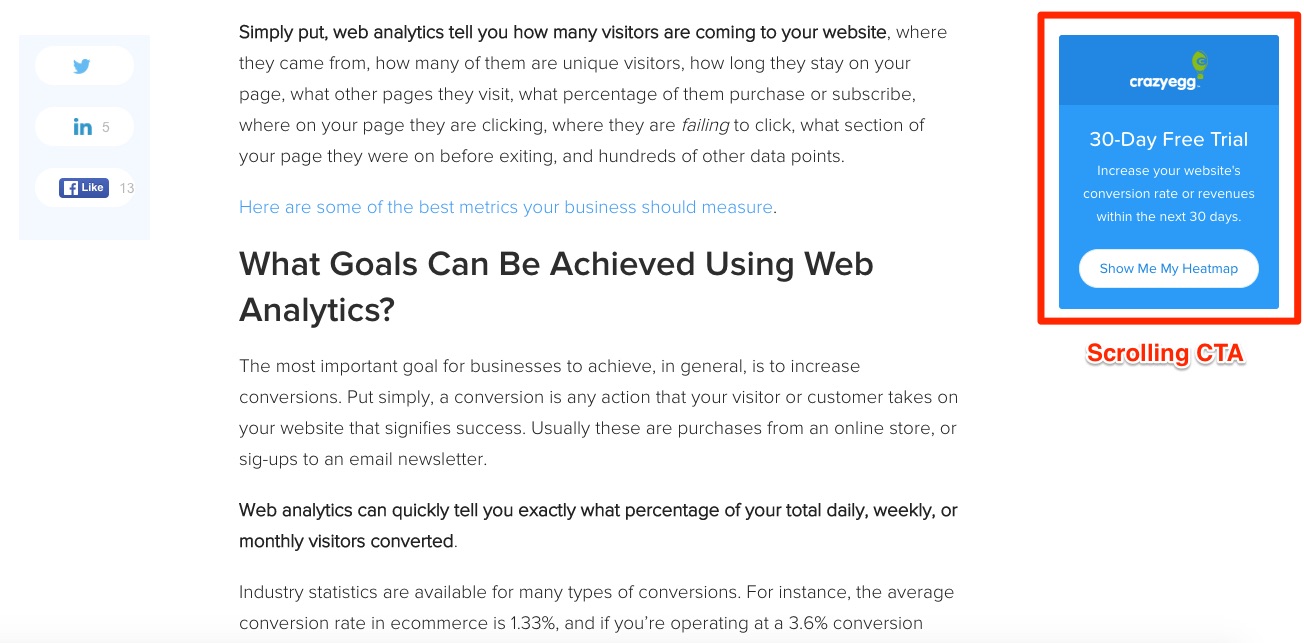
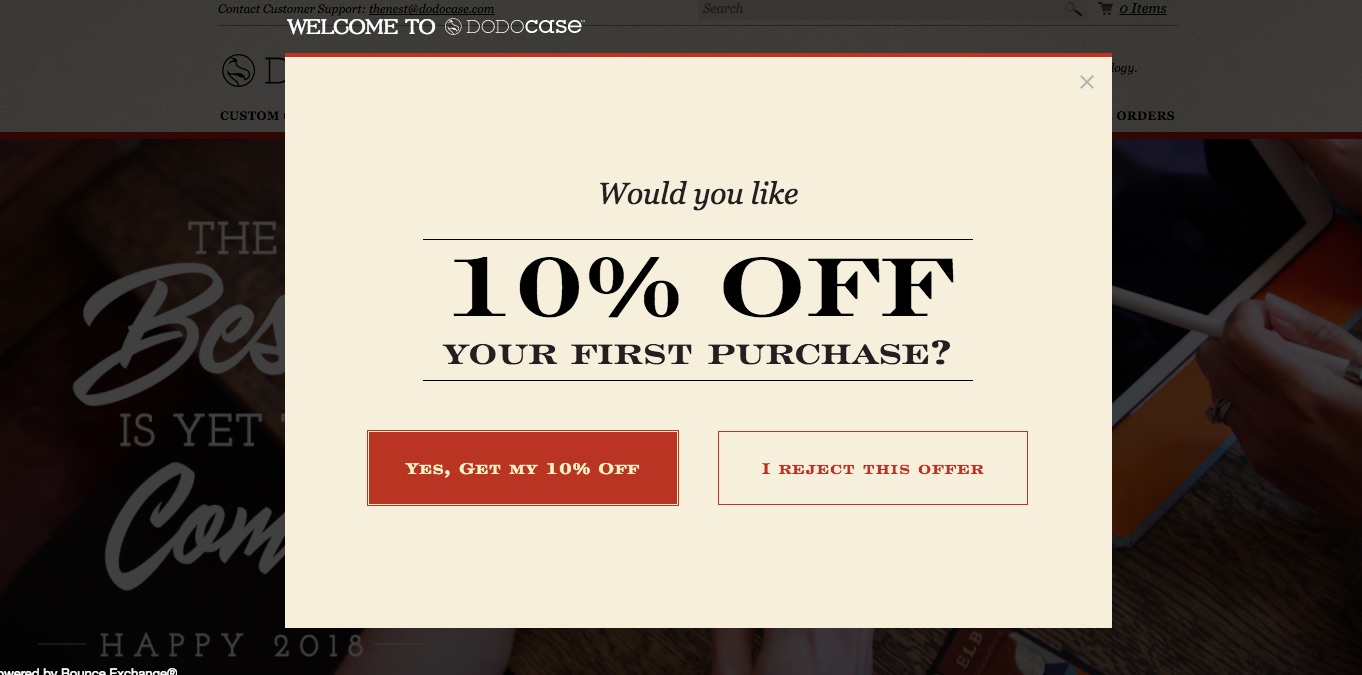
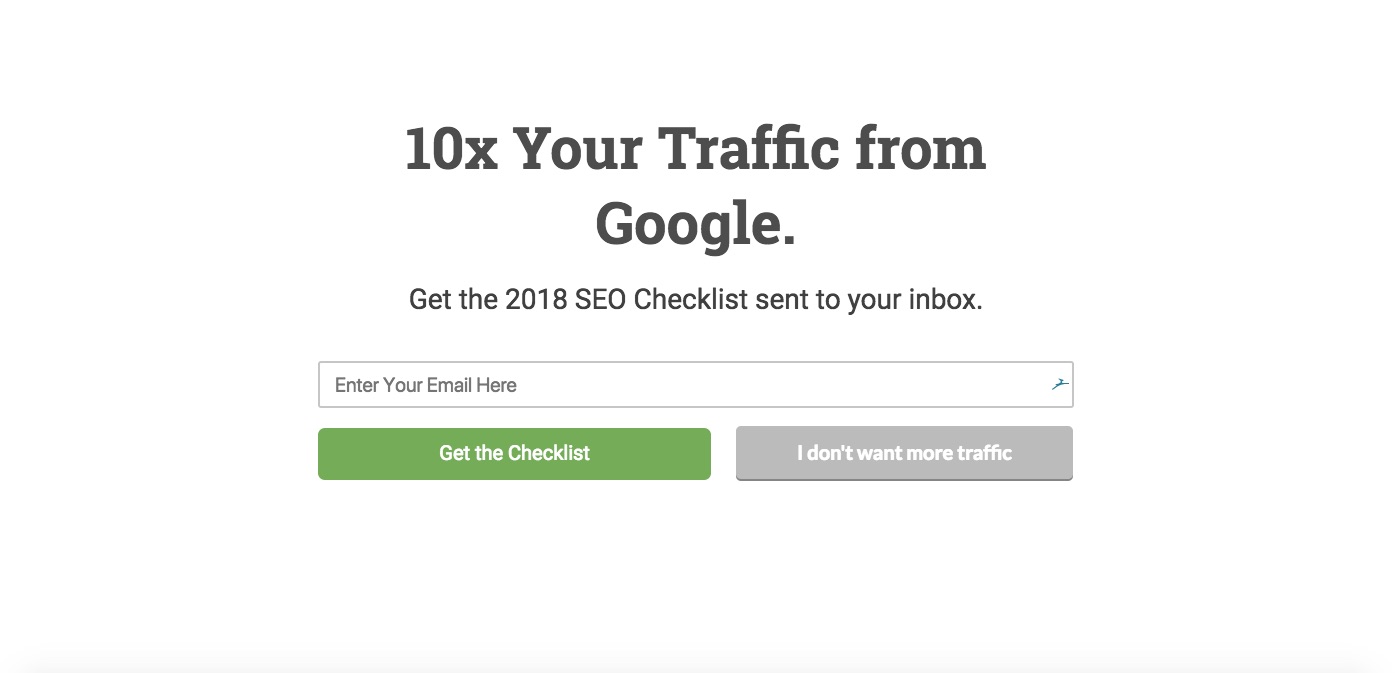
No comments:
Post a Comment